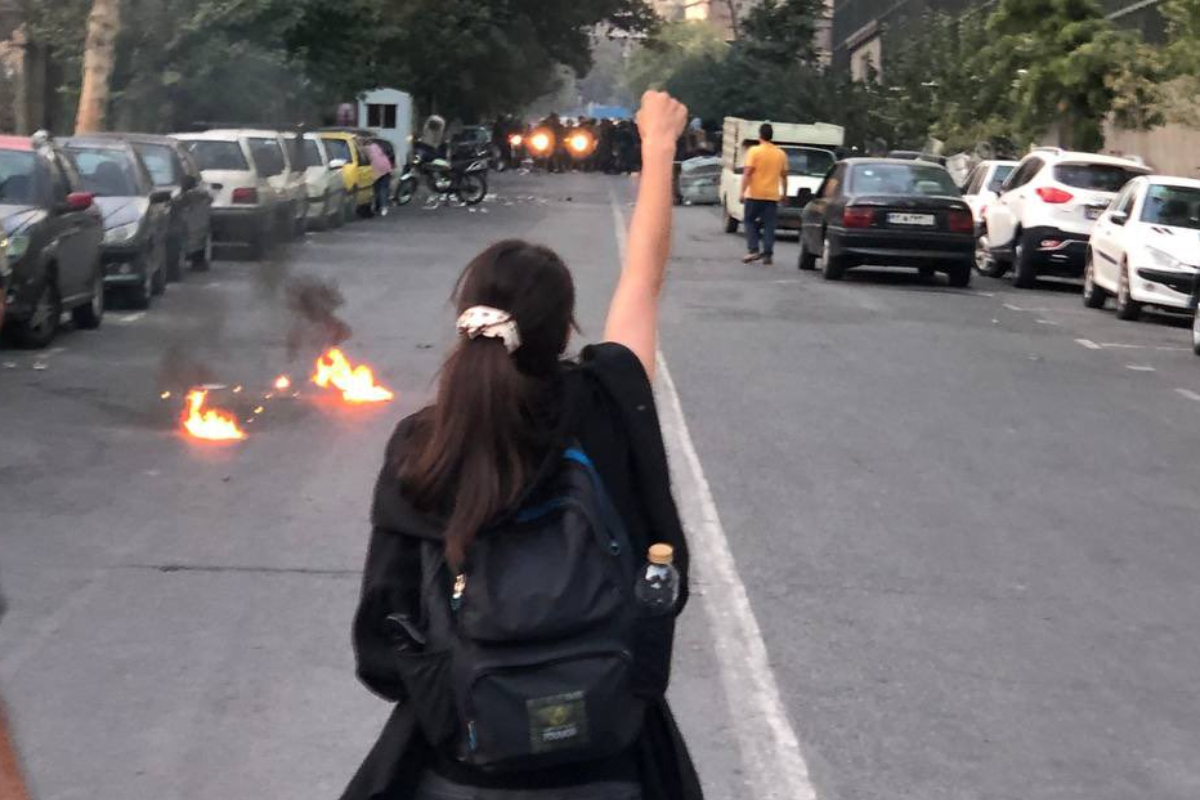Mahsa Amini, 22, from the northwestern Kurdish province of Iran, fell into a coma and died following her arrest in Tehran last week by the morality police. This sparked demonstrations in Tehran and the Kurdistan province from which she came. Her death has been condemned nationwide, with the Persian hashtag #MahsaAmini reaching nearly 2 million Twitter mentions.
Amini was on a visit with her family to the capital, Tehran, when she was detained on Tuesday. She was declared dead by state television on Friday after having spent three days in a coma. Shortly after, a crowd gathered outside the Kasra Hospital in central Tehran.
In her hometown of Saghez, where her body was laid to rest on Saturday, some residents hurled stones at the governor’s office and chanted slogans against the authorities, signifying a defiant mood across Iranian cities, towns and provinces against the Iranian regime. Women can be seen uploading videos of themselves cutting their hair in protest and torching their veils.
Iran’s Islamic Revolution of 1979 is best described in Marjane Satrapi’s book Persepolis – The Story of a Childhood. It is a graphic novel in which the first chapter, ‘The Veil’ depicts how the 1979 revolution changed society, schools that used to be bilingual and co-ed were transformed into segregated institutions with females adorning the veil as part of their mandatory uniform.
Satrapi’s parents, by her description, were Left-leaning and supplied her with books on Marx, Descartes, the Palestinian situation, Fidel Castro, the Vietnam War and the socialists of Iran. Her mind, therefore, was nurtured and primed for critical thinking so when the veil became mandatory after the Iranian Islamic Revolution, she went through the motions of donning the black garment while reflecting on the why.
Satrapi further describes her liberal mother clashing with pro-hijab protestors on the streets of Tehran and how she was scared when a Western journalist’s photograph of her was published in one Iranian newspaper. This marked her mother for threats and scorn, who took to wearing dark glasses and changing her hair colour as a disguise.
That, there were protests against mandatory veiling is unbelievable for someone who grew up in 90s Kashmir and saw how the hijab was enforced by threats, coercion and acid attacks, and knee-capping incidents. Similarly, pictures of Afghanistan society in the 70s and 80s elicit gasps from anyone aware of the Taliban, the blue shuttlecock burqas and the stadium executions of women showing skin.
Why the Iranian Revolution is something that needs to be studied because it was the Left-leaning revolutionaries who invited Ayatollah Khomeini from his exile in Paris to oust the last Shah (King) of the Imperial State of Iran. Soon after his takeover, the very same socialists and revolutionary intellectuals in Iran who had wanted the Shah to be ousted were targeted by Khomeini as dissenters and heretics of Islam.
Today, as of 2022, the chants of bringing the “Shah” back reverberate on the streets of Tehran after four decades, once more proving that the solutions of the Left-leaning are never permanent ones to despotic or tyrannical regimes (the Shah was seen as such along with his secret police – the SAVAK). Leftists strangely made an alliance with Islamists at some point in the late 90s and new millennium, despite the rise of right-wing populism and conservative sentiments, forever cementing the failure of the utopian socialist states many were drawn to in their youth after reading Marx, Lenin, etc.
India has a unique Communist history. Several communists, like Sita Ram Goel, turned anti-communist after getting disillusioned with their ideology, unrealistic goals, infantile solutions and denial of Islamism. His writings should have been a warning or reality check to those still doing the ‘laal salaam’ (red salute) but those driven to dismantle and have destruction as part of their solutions will never reflect or reason but keep white-washing, gaslighting or interpreting facts to suit their narrative.
The latest example is Kavita Krishnan, a former politburo member of the CPI (M-L) and fiery activist who emerged as one of the most influential activists during the massive anti-rape protests that followed the rape and murder of a 23-year-old girl in India’s capital city, New Delhi. So naturally, one would see her showing solidarity with the Iranian women protesting against the custodial murder of Mahsa Amini for “improper hijab”.
The ‘far-left’ activist tweeted in solidarity with the women of Iran protesting by taking off their veils. She was countered by the Chief spokesperson of the Peace Party, Shadab Chauhan, who accused Kavita Krishnan of being more dangerous than the Rashtriya Swayamsevak Sangh (RSS). The left-wing activist, who has been championing women’s rights, got a reality check when Shadab told her that all Muslim women are bound by Sharia law and how Hijab is more important than gold and diamonds.
An obviously rattled Kavita Krishnan then invoked ‘Hindu supremacy’ to reinstate her secular credentials after having run the risk of being viewed as anti-Islam. It did not help. Shadab then warned her against interfering in the religious affairs of Islam, already a dangerous area for non-Muslims because the “Islamophobia” card is conveniently brought up. So the safest space to go to for the far-left activist was “Hindu supremacy” – a very convenient shield when criticised for questioning regressive practices in Islam.
This exchange is a glimpse into how the Left-leaning despite reality checks still do not learn lessons from history and will still intellectualise Islamism, its ambitions for a global Caliphate and the subjugation of men and women under Sharia laws. Maajid Nawaz, former Brit-Muslim radical of the Hizbut Tahrir, now turned reformer, coined the term “Regressive Left” to explain this alliance, this whitewashing of Muslim extremism, and this gaslighting of victims of Muslim radicalization, years ago. It still holds true.
Arshia Malik is a Delhi-based writer, blogger and social commentator
Disclaimer: Views expressed above are the author’s own

